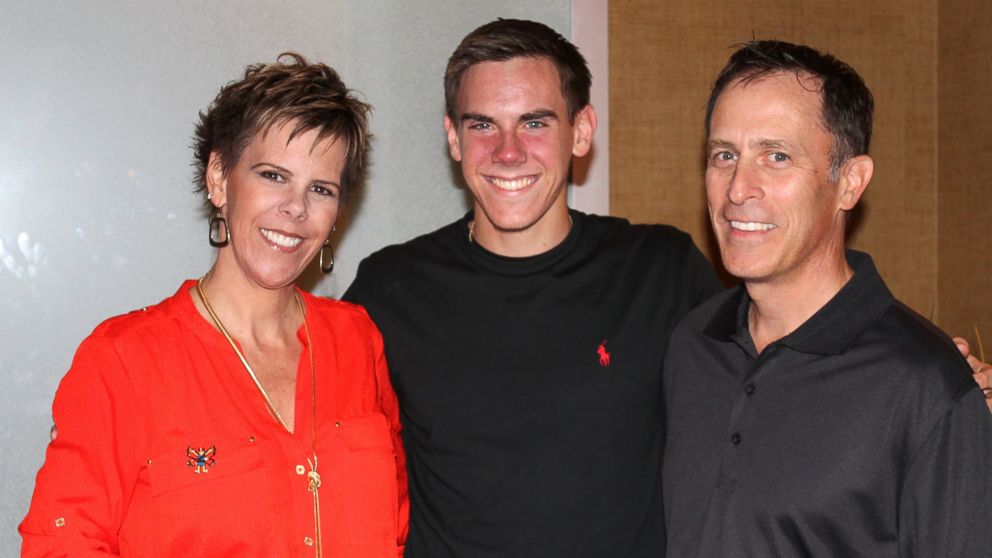'Bubble Boy' Disease, Nearly Always Fatal, Could Have Cure
Dec. 12, 2013— -- Heather Smith carries a recessive gene for a rare sex-linked primary immune deficiency disease that kills most boys before they are 1 year old, and she passed it on to her two sons.
Her oldest, Brandon, behaved like a normal, healthy baby until he was about six months old and couldn't fight off his first cold. He had trouble eating, he developed a rash on his face and thrush in his mouth, and his fingernails turned blue.
'Bubble Boy' legislation to create home treatment program
Brandon died within three weeks of being hospitalized in 1993 of severe combined immunodeficiency, or SCID-X1, commonly known as "bubble boy disease." It was so named for David Vetter, a Texas child with SCID-X1, who died in 1984 after living for 12 years in a germ-free plastic bubble.
"I had seen the movie ["The Boy in the Plastic Bubble"] with John Travolta, but I never dreamed I would someday lose my first-born child to this devastating disease," said Smith, founder of SCID-Angels for Life, which successfully pushed for mandatory screening of all newborns for the disease in her home state of Florida.
"[A bone transplant] wasn't even an option presented to us for consideration," she said. "Instead, we were told that we had to say goodbye to our only child and turn off the machines."
After genetic testing, Smith's son Taylor was born in 1995, and because of early detection, he received the first-ever in-utero bone marrow cell transplant, previously only done on sheep. Today, at 18, he is "thriving," according to his mother and leads a normal life. He's now preparing to go to college.
Taylor receives infusions of gamma globulin, a blood product that helps his immune system fight off infection.
"It's a treatment, not a cure," Smith, 45, told ABCNews.com. "He will take it for the rest of his life. He still has a defective gene."
But now, an international consortium of scientists has perfected gene therapy in promising clinical trials that they say may lead to an eventual long-term cure for SCID-X1.
Eight out of nine children given gene therapy in the study -- all age 3 and younger and living around the world -- fighting off everyday germs that once might have killed them. They have been cancer-free for between nine and 36 months.
"These boys are basically born without any immune system and are not able to fight off even a cold," said Dr. David A. Williams, a pediatric hematologist/oncologist who directs the gene therapy program at Dana-Farber/Boston Children's Cancer and Blood Disorders Center.
The U.S. study sites are Dana-Farber/Boston Children's, Cincinnati Children's Hospital and UCLA. They are being funded by the National Institute of Allergy and Infectious Diseases and the National Heart Lung and Blood Institute's Product Assistance for Cellular Therapies Program.
The standard treatment for boys with SCID-X1 is stem cell or bone marrow transplantation. That works well when there is a sibling who matches or if it's done before a child contracts an infection.
But problems happen graft versus host disease develops and the incoming immune system attacks the child's own cells, or when the graft just doesn't take.
"This is the potential advantage in the experimental trials," said Williams. "Since you are using the child's own cells, there is no search for a donor. The child is its own donor."
Gene therapy works by taking stem cells from the child's own bone marrow, correcting the IL-2 common gamma chain receptor gene, then reintroducing the cells back into the child.
There, the genetically engineered stem cells multiply and produce normal immune cells.
Heather Smith said she was hesitant to "take a risk" and consider gene therapy for Taylor in the future, even if he were a good candidate.
"Other than getting infusions every three weeks, he feels like he lives a totally normal life," she said. "His quality of life is so good."
But for other young children down the road, she said, "it's extremely exciting if this leads to a cure."




